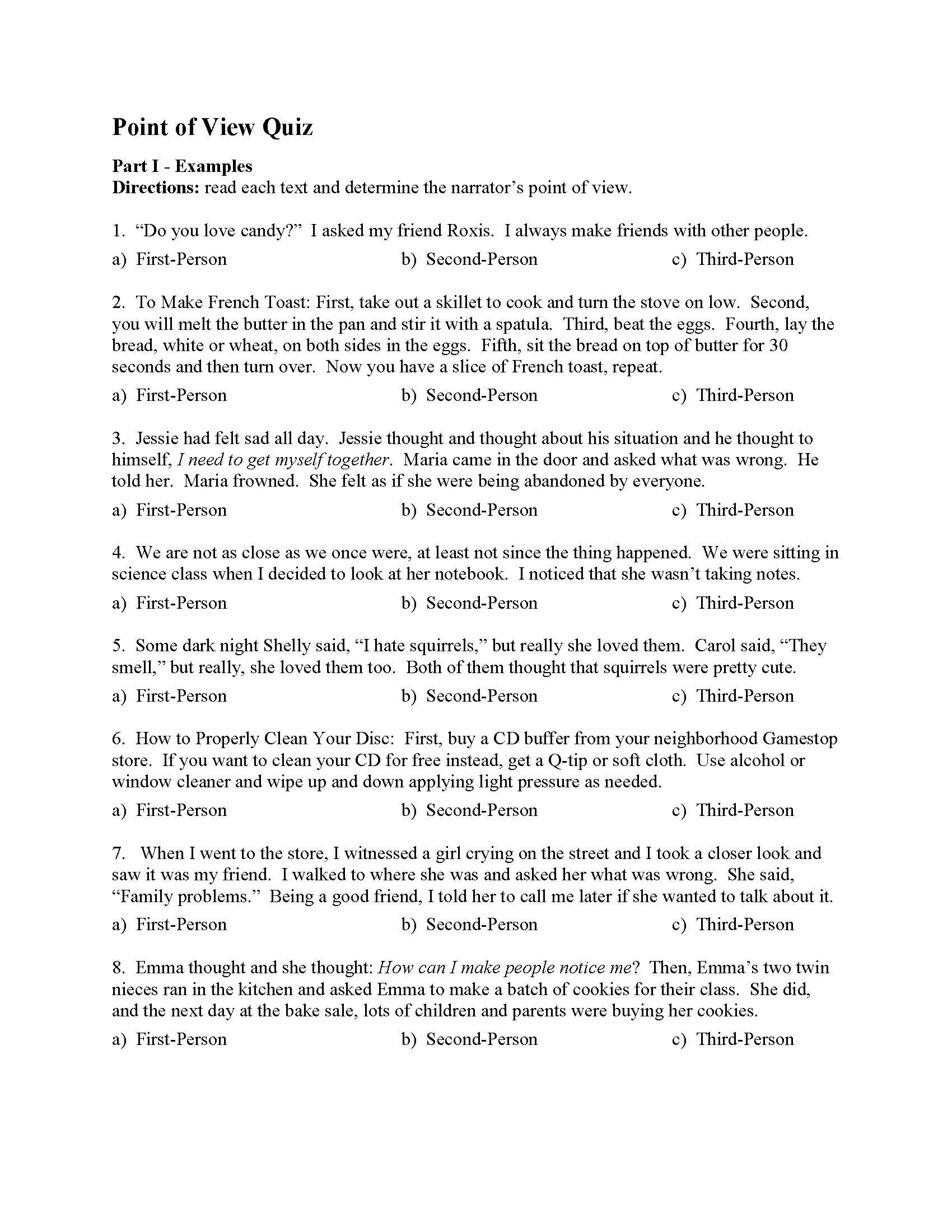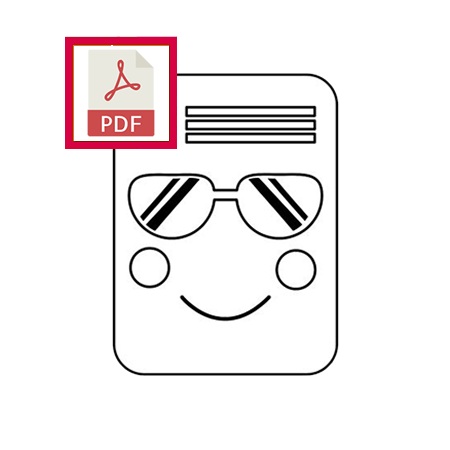
Looking for a way to quickly assess how well students can identify the narrator’s perspective? Check out this point of view quiz. This quiz answer 15 multiple-choice questions. Students read passages and determine the narrator’s perspective. They also match terms to definitions.


 to enlarge it or view the source file." />
to enlarge it or view the source file." />





RL.K.6 - With prompting and support, name the author and illustrator of a story and define the role of each in telling the story.
RL.1.6 - Identify who is telling the story at various points in a text.
RL.2.6 - Acknowledge differences in the points of view of characters, including by speaking in a different voice for each character when reading dialogue aloud.
RL.3.6 - Distinguish their own point of view from that of the narrator or those of the characters.
RL.4.6 - Compare and contrast the point of view from which different stories are narrated, including the difference between first- and third-person narrations.
RL.5.6 - Describe how a narrator’s or speaker’s point of view influences how events are described.
RL.6.6 - Explain how an author develops the point of view of the narrator or speaker in a text.
RL.7.6 - Analyze how an author develops and contrasts the points of view of different characters or narrators in a text.
RL.8.6 - Analyze how differences in the points of view of the characters and the audience or reader (e.g., created through the use of dramatic irony) create such effects as suspense or humor.
RL.9-10.6 - Analyze a particular point of view or cultural experience reflected in a work of literature from outside the United States, drawing on a wide reading of world literature.
RL.11-12.6 - Analyze a case in which grasping a point of view requires distinguishing what is directly stated in a text from what is really meant (e.g., satire, sarcasm, irony, or understatement).
RI.3.6 - Distinguish their own point of view from that of the author of a text.
RI.4.6 - Compare and contrast a firsthand and secondhand account of the same event or topic; describe the differences in focus and the information provided.
RI.6.6 - Determine an author’s point of view or purpose in a text and explain how it is conveyed in the text.
RI.7.6 - Determine an author’s point of view or purpose in a text and analyze how the author distinguishes his or her position from that of others.
RI.8.6 - Determine an author’s point of view or purpose in a text and analyze how the author acknowledges and responds to conflicting evidence or viewpoints.
RI.9-10.6 - Determine an author’s point of view or purpose in a text and analyze how an author uses rhetoric to advance that point of view or purpose.
RI.11-12.6 - Determine an author’s point of view or purpose in a text in which the rhetoric is particularly effective, analyzing how style and content contribute to the power, persuasiveness, or beauty of the text.